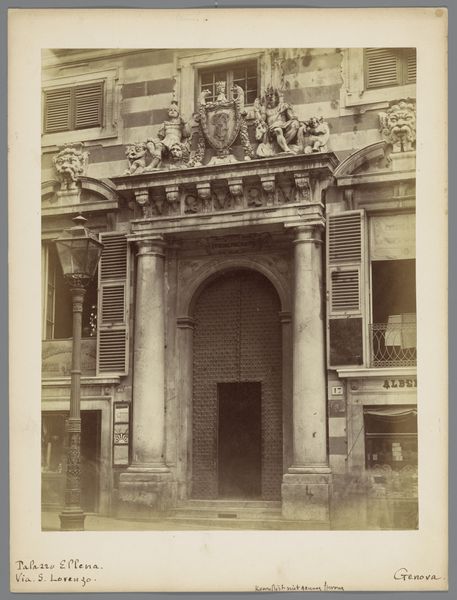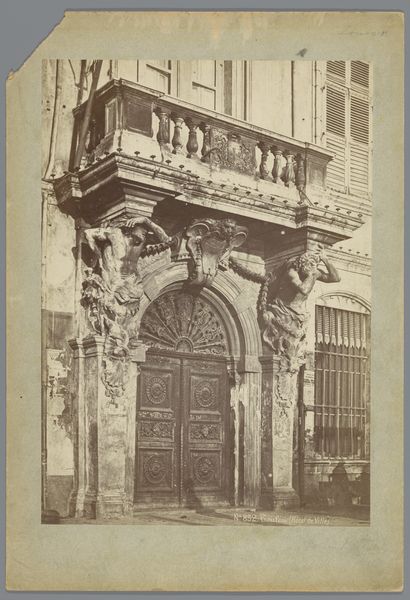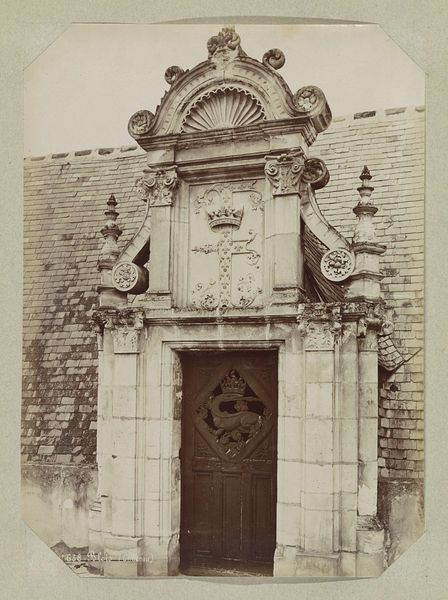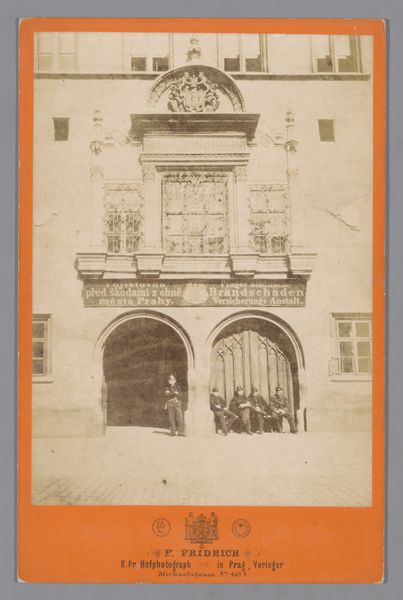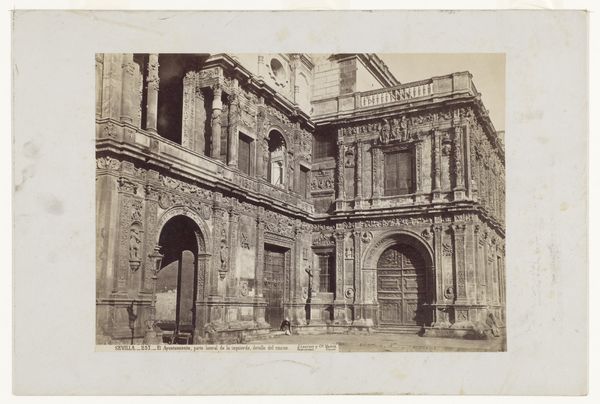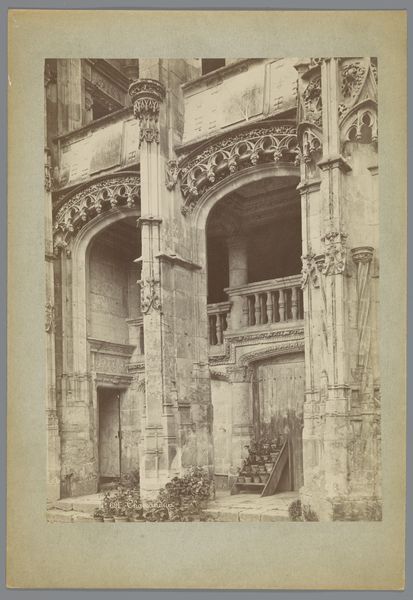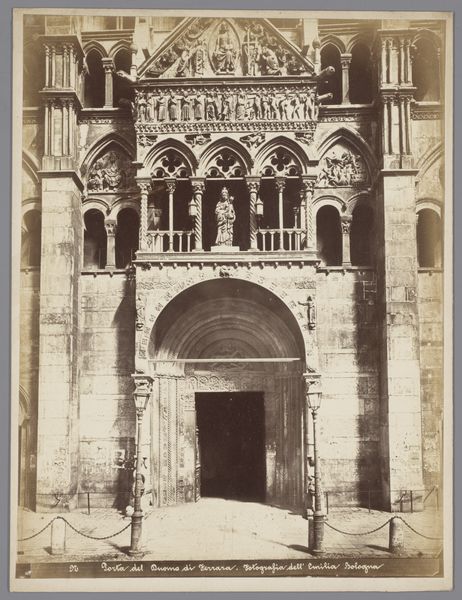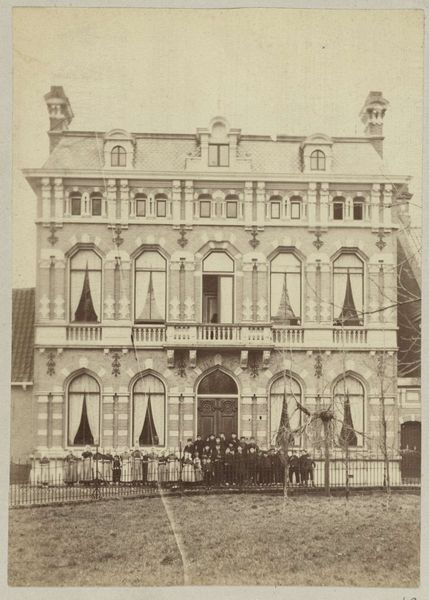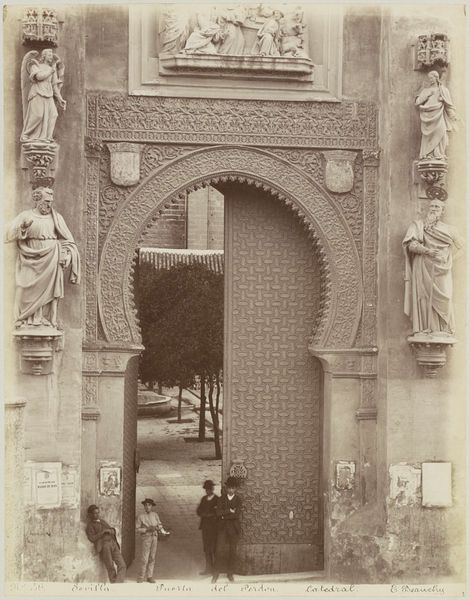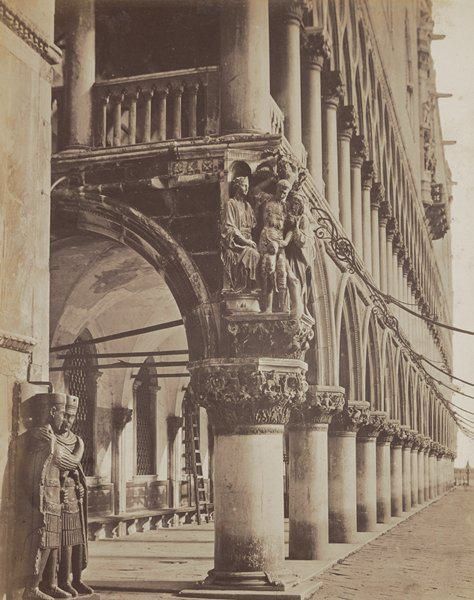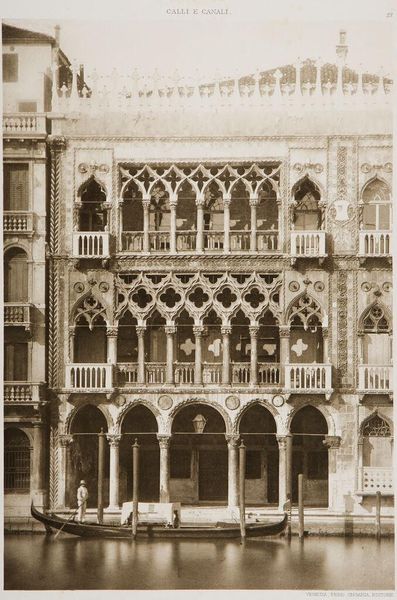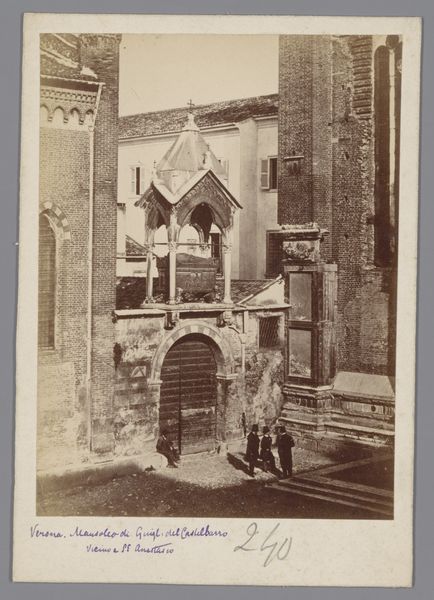
Poort op de binnenplaats van het kasteel van Blois met reliëfs van Lodewijk XII te paard en van stekelvarkens c. 1880 - 1900
0:00
0:00
medericmieusement
Rijksmuseum
Dimensions: height 353 mm, width 250 mm
Copyright: Rijks Museum: Open Domain
Curator: This gelatin-silver print, dating from around 1880 to 1900, captures a gateway at the Chateau de Blois. The photographer, Mèdèric Mieusement, framed this perspective of the inner courtyard. Editor: I'm immediately struck by the somber stillness of it all. The sepia tones lend a weighty atmosphere to the already imposing architecture. It's a photograph that feels like a memory fading at the edges, full of intricate stone details that hint at a forgotten grandeur. Curator: Mieusement chose his angle carefully, emphasizing the sculpted figure of Louis XII on horseback poised above the entrance, alongside the ever-present emblem of the porcupine. Those symbols connect us directly to the French monarchy and its lasting imprint on the nation's cultural consciousness. Editor: That equestrian statue does seem frozen mid-narrative, doesn't it? All the stone tracery reminds me how architecture often aspires to communicate unspoken stories – it makes you wonder who walked through that archway and what stories they brought with them. There's a sense of secrets, kept silent over centuries. Curator: And the architectural detail surrounding the main portal echoes Louis XII's aspirations—a deliberate, visual statement of power through the revival of earlier gothic and renaissance motifs that were charged with meaning for contemporaries. Editor: Looking at it now, that main arched entryway looks dark and empty—a portal to the past? Is this longing for the medieval? Curator: Perhaps, but it also signifies transformation. The porcupine emblem became especially symbolic after Louis XII used it, representing his intention to strike back at anyone who dared to challenge his rule. It is loaded with connotations, even suggesting insight, as myth held they could shoot quills in any direction, fore and aft. Editor: And the composition subtly guides our eye through, inviting speculation and gently awakening dormant fragments of history. Even if it feels melancholic, there’s a kind of powerful, romantic pull there—a lost kingdom forever trapped in the past, waiting for rediscovery. Curator: I agree. Mieusement understood how photography could serve not just as documentation but as a powerful tool for historical and symbolic interpretation, engaging viewers in ways that continue to resonate. Editor: Indeed. This image feels more like a whispered question about our past than a simple historical record. Food for thought, right?
Comments
No comments
Be the first to comment and join the conversation on the ultimate creative platform.
